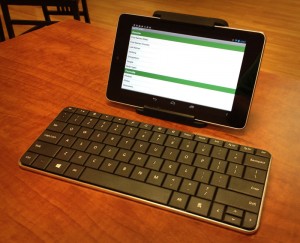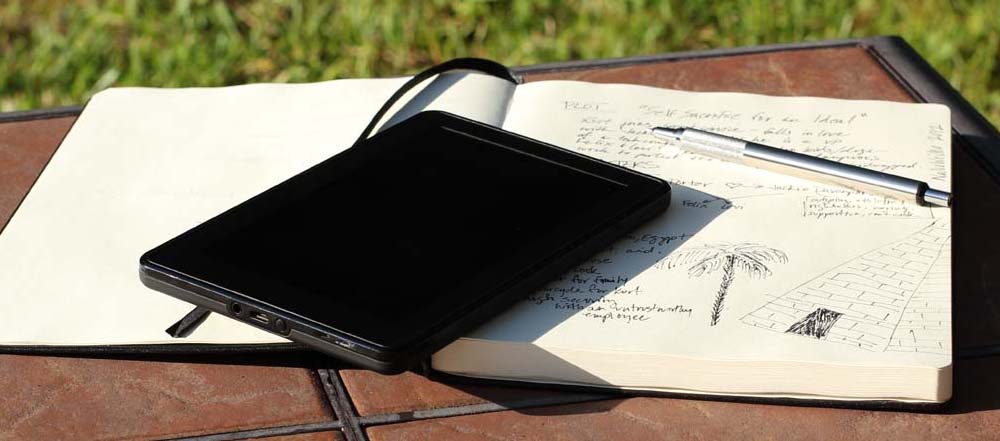I like to get outside my regular living areas to find inspiration and get some real writing. One key to success is to appear as though you are working very hard on your stuff so people ignore you. Being a creepy weirdo could get you kicked out of a prime place.
Our first stop on the world tour is fast food restaurants. For my purposes, fast food restaurants are places of low commitment to food as a culinary experience with a focus on speed and expense. Patrons do not typically stop in for a leisurely luxury lunch here. They are usually in a hurry or have limited time and/or budget.
How to get the most out of the experience:
- Sit where you can observe employee activities (hostess station, drive-thru, counter help, etc.)
- Observe employees. Imagine what has brought them to work at a fast food restaurant. Who is in charge? Is there evidence of teamwork or is it a broken system?
- Identify individual quirks of the workers.
- If you are lucky enough to be able to observe the same set of people repeatedly, try making a notebook of fictional dossiers of the players. Include a rough sketch, habits, dreams, realities, physical descriptions, personality traits, etc.
- Observe patrons. Why are they there? Habit? Circumstance? Laziness? Guilty pleasure?
Here’s a checklist for the most popular fast food restaurants! Which one is your favorite for people watching?
- A&W Restaurants
- Applebee’s
- Arby’s
- Bob Evans
- Bojangles’
- Boston Market
- Brioche Dorée
- Burger King / Hungry Jack’s
- Café de Coral
- Carl’s Jr.
- Charley’s Grilled Subs
- Checkers / Rally’s
- Chester’s International
- Chick-fil-A
- Chicken Cottage
- Chicken Delight
- Chicken Express
- Chicken Licken
- Chili’s
- Chipotle Mexican Grill
- Chuck E. Cheese’s
- Church’s Chicken / Texas Chicken
- Cook Out Restaurant
- Country Kitchen
- Culver’s
- Dairy Queen
- Del Taco
- Denny’s
- Domino’s Pizza
- Dunkin’ Donuts
- El Pollo Loco
- Fatburger
- Firehouse Subs
- Five Guys
- Fuddruckers
- Gloria Jean’s Coffees
- Guthrie’s
- Hardee’s / Red Burrito
- Harvey’s
- Hesburger
- IHOP (International House of Pancakes)
- In-N-Out Burger
- Jack in the Box
- Johnny Rockets
- John’s Incredible Pizza
- Jollibee
- Kenny Rogers Roasters
- KFC
- Krystal
- Kyochon
- Little Caesars Pizza
- LongHorn Steakhouse
- Long John Silver’s
- Lotteria
- Maoz Vegetarian
- Manchu Wok
- Marrybrown
- McDonald’s / Macca’s
- Moe’s Southwest Grill
- MOS Burger
- Nando’s
- Nathan’s Famous
- New York Fries
- Noble Roman’s
- Olive Garden
- Orange Julius
- Outback Steakhouse
- Panchero’s Mexican Grill
- Panda Express
- Papa John’s Pizza
- Paul
- Panera Bread
- Perkins
- Pizza Hut
- Pollo Campero
- Pollo Tropical
- Pret A Manger
- Popeyes Chicken & Biscuits
- Quick
- Quiznos
- Raising Cane’s Chicken Fingers
- Red Lobster
- Red Robin
- Red Rooster
- Romano’s Macaroni Grill
- Roy Rogers Restaurants
- Ruby Tuesday
- Sarku Japan
- Sbarro
- Smoothie King
- Sonic Drive-In
- Starbucks
- Steak ‘n Shake
- Student Biryani
- Subway
- Taco Bell
- Taco Bueno
- Taco Cabana
- Taco del Mar
- Taco John’s
- Taco Mayo
- Taco Tico
- Taco Time
- Tastee-Freez
- TGI Fridays
- Tim Hortons
- Tony Roma’s
- Togo’s
- Uno Chicago Grill
- Vapiano
- Wendy’s
- Wendy’s Supa Sundaes
- Whataburger
- White Castle
- White Spot
- Wimpy
- Wingstop
- Zaxby’s




